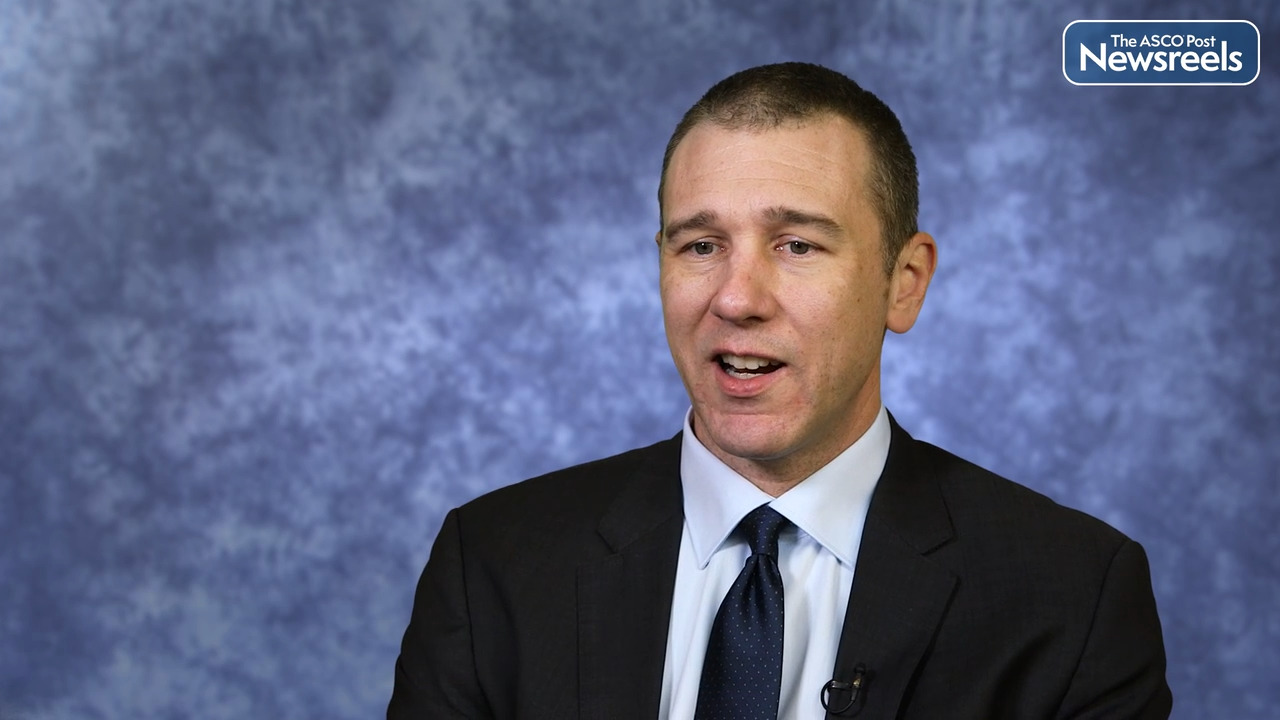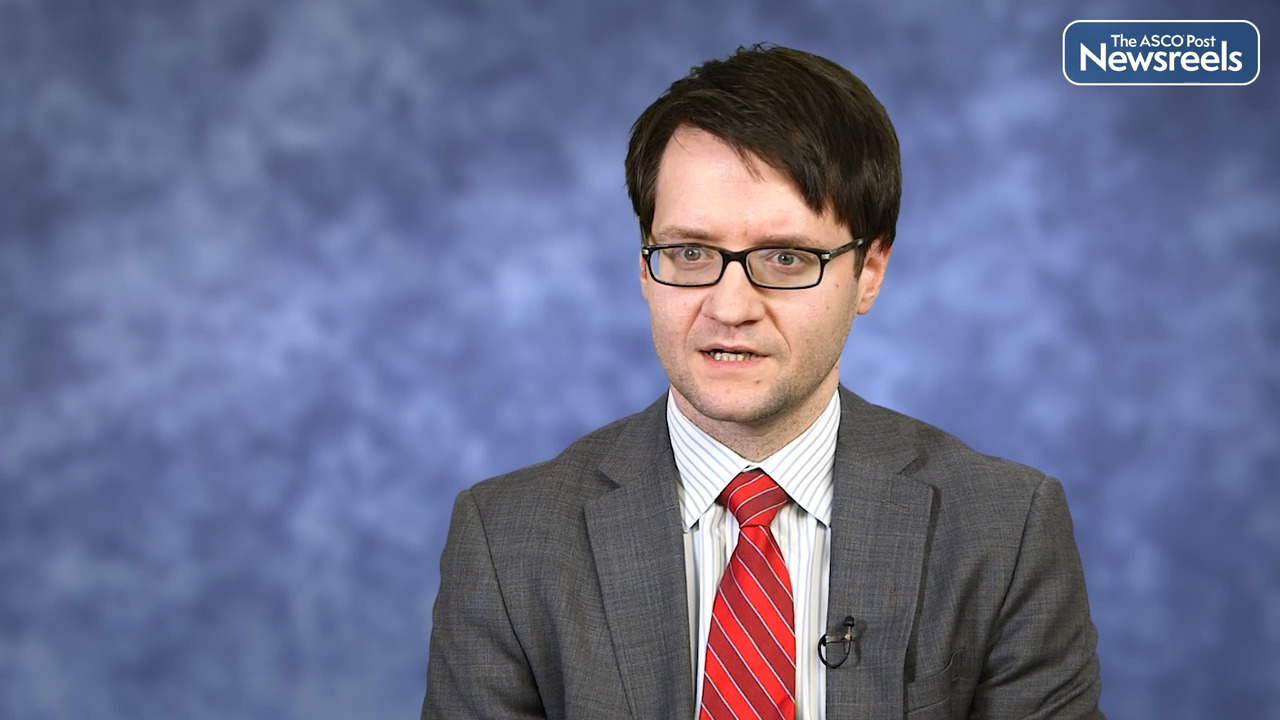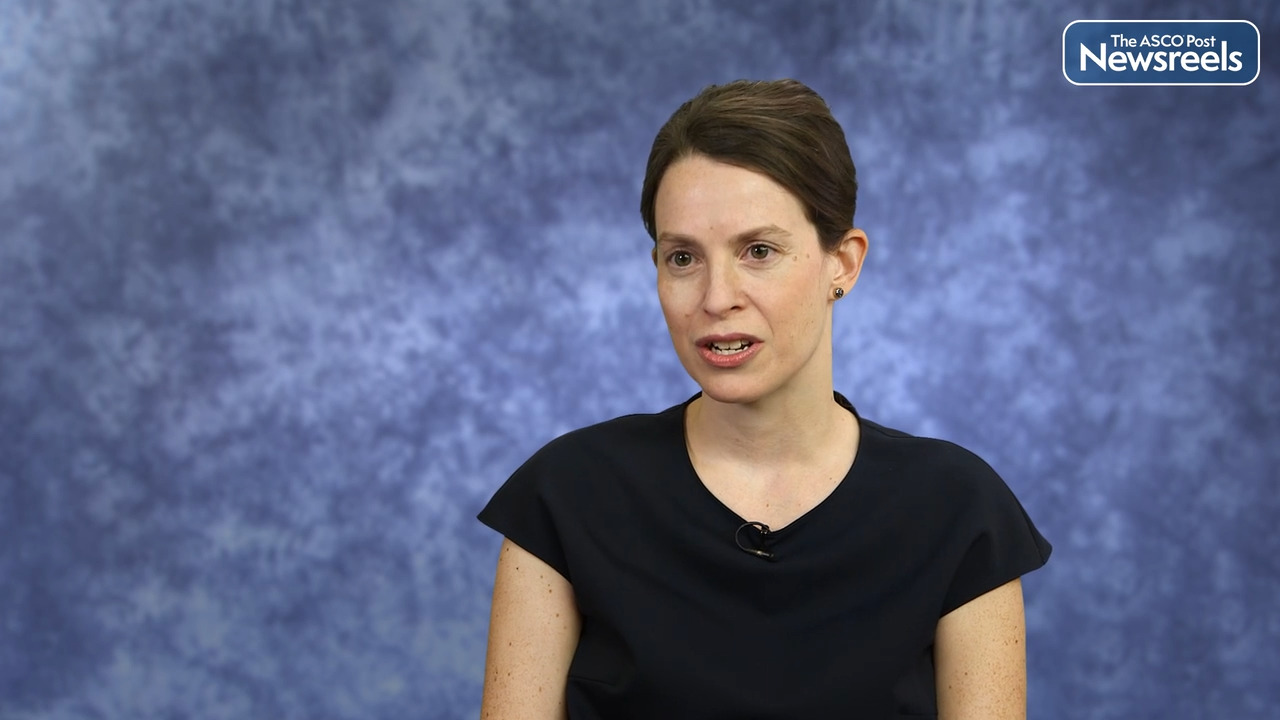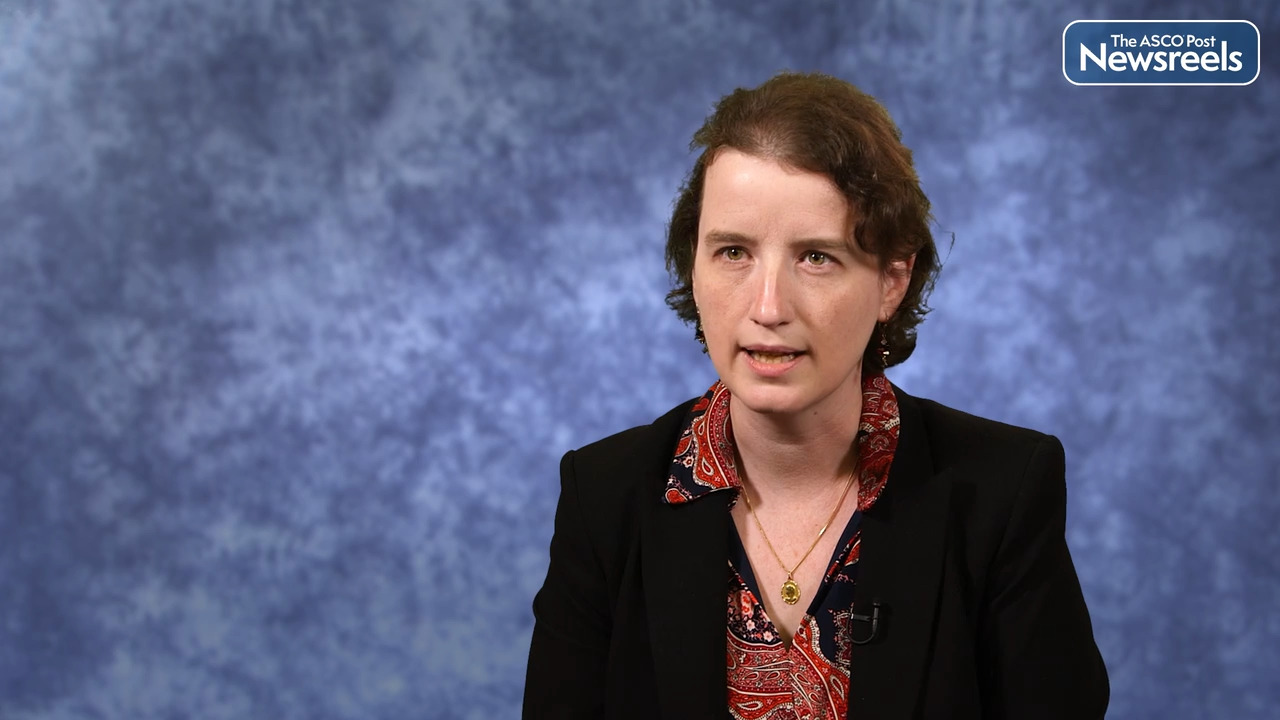Jorge E. Cortes, MD, on CML: Efficacy and Safety of Vodobatinib
2022 ASH Annual Meeting and Exposition
Jorge E. Cortes, MD, of Georgia Cancer Center at Augusta University, discusses new findings on vodobatinib, which was administered to patients with chronic-phase Philadelphia chromosome–positive chronic myeloid leukemia (CML) and appeared to be efficacious and safe in people who had received therapy with two or three prior tyrosine kinase inhibitors (TKIs). Vodobatinib remains a potential option for these highly refractory patients. A phase II study (NCT02629692) of vodobatinib is ongoing in CML patients whose disease has failed to respond to three or more TKIs, including ponatinib (Abstract 84).
Transcript
Disclaimer: This video transcript has not been proofread or edited and may contain errors.
In this study, we looked at vodobatinib, a new tyrosine kinase inhibitor. It's an ATP competitive inhibitor of Bcr-Abl in patients that had refractory or relapsed chronic myeloid leukemia. This study is a phase one study where we had a dose escalation part and then a dose expansion part. We are combining both the dose escalation and the dose expansion cohort for this analysis, and the analysis is focused specifically on the efficacy and safety. According to the number of tyrosine kinase inhibitors that the patients had received previously. The design required that patients had received at least three prior TKIs or were unable to receive an additional TKI for whatever reason. We divided the cohorts into those that had received two or fewer tyrosine kinase inhibitors previously, or who had received three or more prior tyrosine kinase inhibitors. We also looked specifically at patients that had received prior ponatinib. Most of them were in the three TKI priors, and we even have a handful of patients, three, that had received prior asciminib.
What we found on these analysis is that vodobatinib is very effective. We had a very high rate of major cytogenetic response, and it's very similar between the patients with the two or less TKIs previously and the three or more TKIs previously, approximately a 40% response rate in both arms. That includes the patients that had received prior ponatinib, but it was a little over 40% in those patients. Very importantly, major molecular response was seen in approximately 50% of patients, including a little over 50% of patients who had received the prior ponatinib. One of the patients that had received asciminib, who also had received ponatinib, also achieved a complete cytogenetic response. High levels of response, durable responses, and it reflects on a very good overall survival of more than 60% at three years.
The safety profile was very favorable. Some diarrhea, but very little in terms of grade three toxicity, and very importantly, we really did not see any arterial occlusive events of significance. There were really a very low rate of items, and most of these were just like cold hands and very little. No concerns about the arterial occlusive events, perhaps because it's a very selective drug. It does not have VGF receptor inhibition, it doesn't have PDGF receptor inhibition, so it's a very selective, and it reflects in the safety.
What we conclude from this analysis is that the drug is a very good agent that has good levels of efficacy in both patients that have received two or fewer tyrosine kinase inhibitors and three or more, including patients that had received prior ponatinib with a very good safety profile. That's important because there's an ongoing pivotal study for patients that have received three or more tyrosine kinase inhibitors, including ponatinib. It's enrolling, but it offers a good option for those patients who otherwise may not have too many other treatment alternatives.
The ASCO Post Staff
Jennifer R. Brown, MD, PhD, of Dana-Farber Cancer Institute, discusses phase III findings of the ALPINE study, which showed that zanubrutinib is more efficacious and better tolerated than ibrutinib as a treatment for patients with relapsed or refractory chronic lymphocytic leukemia (CLL) and small lymphocytic lymphoma (SLL). In this first head-to-head comparison of the two BTK inhibitors, the superior progression-free survival of zanubrutinib was observed across all major subgroups, including high-risk patients (Abstract LBA-6).
The ASCO Post Staff
Paolo F. Caimi, MD, of the Taussig Cancer Institute, Cleveland Clinic, discusses new findings showing that patients with diffuse large B-cell lymphoma (DLBCL) who achieve a complete response after salvage therapy with rituximab, ifosfamide, carboplatin, and etoposide (R-ICE) can achieve long-term disease control, regardless of the time to relapse from initial therapy, particularly if they proceed to autologous stem cell transplant (ASCT). These results suggest that second-line chemotherapy followed by ASCT and/or CAR T-cell therapy for chemosensitive and chemorefractory patients may maximize patient outcomes, regardless of time to relapse (Abstract 156).
The ASCO Post Staff
Andrew Matthews, MD, of the Abramson Cancer Center, University of Pennsylvania, discusses findings from a large, multicenter study that showed superior outcomes with 7 + 3 chemotherapy (cytarabine continuously for 7 days, along with short infusions of an anthracycline on each of the first 3 days) vs venetoclax in patients with acute myeloid leukemia (AML). In this real-world data set, the 7 + 3 cohort outperformed historical benchmarks in overall survival and early mortality, perhaps reflecting improved later lines of therapy and patient selection. Prospective studies (such as NCT04801797) must confirm the superiority of intensive chemotherapy (Abstract 426).
The ASCO Post Staff
Julie Côté, MD, of CHU de Québec–Université Laval, discusses findings from the Canadian Myeloma Research Group database, which showed that integrating bortezomib and lenalidomide into the autologous stem cell transplant (ASCT) sequence produces a median overall survival rate ≥ 10 years in most patients with newly diagnosed multiple myeloma. These observations highlight the contribution of post-ASCT maintenance, particularly lenalidomide given until disease progression, when used in multiple patient groups including those with and without high risk, as well as those requiring a second induction regimen (Abstract 117).
The ASCO Post Staff
Eileen M. Boyle, MD, PhD, of the Perlmutter Cancer Center, NYU Langone Health, discusses Fc-mediated antibody effector function, inflammation resolution, and oligoclonality and their role in predicting sustained measurable residual disease negativity in patients with newly diagnosed multiple myeloma who were treated with immunotherapy regimens. For the first time, an analysis of T-cell receptors shows that oligoclonal profiles seen on treatment may influence the fitness of the immune response (Abstract 100).





